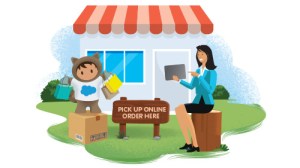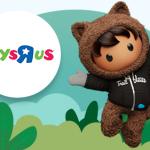In an industry as diverse as retail, it’s no surprise the impact of COVID-19 has been uneven. Department stores, for example, struggle due to store closures and reduced foot traffic. On the other hand, some ecommerce players are attracting new shoppers and experiencing record growth.
Our Salesforce Shopping Index revealed that parts of Asia experienced 200% year-over-year (YoY) digital revenue growth in April, as a result of more consumers spending online. This is positive news not only for those succeeding online already, but for retailers ready to embrace digital opportunities.
I discussed how retailers can recover and grow post-COVID-19 during a recent joint webinar with eTail. Joining me on the panel were representatives from some of Asia’s most innovative retailers: Pomelo Fashion, Gojek, and Razer. The consensus was clear: retailers need to accelerate their digital strategies and stay relevant to customer needs.
Jean Thomas, CMO of Pomelo Fashion, made the point that engaging customers on their preferred digital platforms was an imperative even before the pandemic:
Innovation is not just about cutting edge technology. It’s about meeting your customers where they’re at and finding meaningful ways to add value. Here are five practical examples of how retailers innovated and stayed relevant.
1. Double down on shopper experience
There’s a distinct rise in different ways to buy online. Customers can use apps, messaging platforms, social media, smart speakers, and more.
We call this shopping at the edge, where brands provide customers with experiences and transaction opportunities on the channels where they’re already spending time.
Antoine De Carbonnel, Chief Commercial Officer at Gojek, said they are helping retailers and consumer packaged goods companies understand the different channels where they can sell.
2. Embracing contactless engagement
Contactless payments are not new. But with COVID-19, we’ve seen more brands embrace tap-to-pay options and contactless delivery. Some new services, like curbside pickup or free click and collect, are likely to remain popular in the early business reopening phase and could be here to stay.
One example is the You Shop We Drop service introduced by Gaysorn Village, a high-end mall in Thailand. Customers can shop online and pick up their goods at designated locations, without leaving their cars.
3. Responding with empathy and creativity
It’s been inspiring to see many brands living their values and pivoting their businesses to do social good. We saw this with Razer, which used its production line to produce more than a million masks for the Singapore community.
Yvonne Lim, Global eCommerce Director at Razer, says:
4. Turning every employee into a brand hero
Employees are the real brand heroes in retail. Brands have been focused on employee health and safety, while finding ways for everyone to stay productive. This has led to dynamic new offerings like digital concierge services, where in-store employees can apply their skills at home. Beauty brand Sephora, for example, lets customers book online makeup and skincare consultations with the retailer’s beauty experts.
COVID-19 has also sparked conversations on the future of customer service and whether some teams still require a physical location. These conversations will continue as retailers shift their business strategies.
5. Improving merchandise agility and visibility
Retailers have been working behind the scenes to minimise disruption to their supply chains. Building on this, retailers should be able to provide customers with up-to-the minute inventory visibility. This is important as customers are now more selective about how they shop. Customers don’t want to visit a physical store, only to find out something’s not available. The ONI Global website, for example, allows customers to see which health products are available, so that they know what they want before going to the store.
Takeaway
Customer demand for frictionless experiences on- and offline haven’t changed. However, the last few months have put a megaphone on the demands that customers have continued to request. To meet these demands, retailers need to listen and respond in a fast and personalised way.
Register for Salesforce Live: Asia and learn how retailers like ONI Global and Toys”R”Us Asia are responding to customers and navigating today’s new business environment.


















